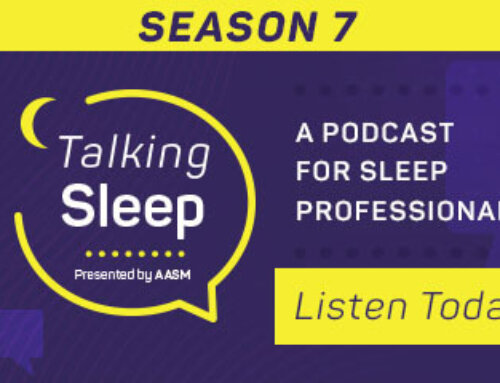Season 6 | Episode 11
DR. ALYSSA CAIRNS, GUEST
Despite having more treatment options than ever before, narcolepsy remains significantly underdiagnosed. Is there a potential clue on the polysomnogram (PSG) that we are overlooking? Dr. Alyssa Cairns and her team are exploring the biophysiological phenotypes of sleep disorders, specifically central disorders of hypersomnolence. She discussed how she combed through half-a-million sleep records and looked at the predictive value of a sleep-onset REM period (SOREMP) on PSG for a future diagnosis of narcolepsy.

Alyssa Cairns, PhD, is the chief scientist at BioSerenity. She has more than 20 years of experience in sleep medicine and clinical trials, and she has authored over 30 scientific manuscripts and has been the recipient of more than 20 research grants. Dr. Cairns is exploring the biophysiological phenotypes of sleep disorders in large, real-world datasets. Her current research interests include central disorders of hypersomnolence and multicenter, decentralized validation studies of consumer sleep tracking technology. She received her doctorate in psychology from the University of Southern Mississippi, where she was a recipient of an NIH Research Service Award (F31). She completed an NIH-funded postdoctoral research fellowship at Brown Medical School, focusing on the role of sleep and circadian factors in the development of obesity and metabolic dysregulation.
Resources
- Cairns A, Bogan R. Comparison of the macro and microstructure of sleep in a sample of sleep clinic hypersomnia cases. Neurobiol Sleep Circadian Rhythms. 2019;6:62-69. https://doi.org/10.1016/j.nbscr.2019.02.001
- Cairns A, Bogan R. Underutilization of the MSLT in sleepy patients with a short onset REM period (SOREMP) in the sleep clinic. Sleep Med. 2017;32:150-156. https://doi.org/10.1016/j.sleep.2016.11.023
- Cairns A, Bogan R. Prevalence and clinical correlates of a short onset REM period (SOREMP) during routine PSG. Sleep. 2015;38(10):1575-1581. https://doi.org/10.5665/sleep.5050

